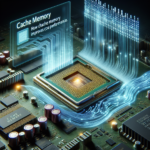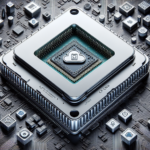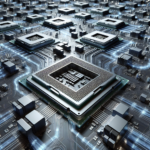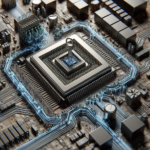Explaining the Use of CPUs in Space Exploration
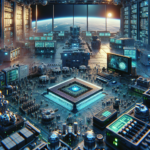
Explaining the Use of CPUs in Space Exploration
Space exploration has always been a frontier of human ingenuity and technological advancement. One of the critical components that enable spacecraft to perform complex tasks and navigate the vast expanse of space is the Central Processing Unit (CPU). This article delves into the role of CPUs in space exploration, their unique requirements, and the challenges they face in the harsh environment of space.
The Role of CPUs in Space Exploration
Command and Data Handling
CPUs are the brains of any spacecraft, responsible for command and data handling (C&DH). They execute commands from Earth, control spacecraft systems, and process data from various instruments. This includes everything from adjusting the spacecraft’s orientation to managing power systems and processing scientific data collected by onboard instruments.
Navigation and Guidance
Accurate navigation and guidance are crucial for space missions. CPUs process data from sensors and instruments to determine the spacecraft’s position and velocity. They execute algorithms to adjust the spacecraft’s trajectory, ensuring it stays on course. This is particularly important for missions involving planetary landings or rendezvous with other spacecraft.
Scientific Data Processing
Space missions often carry a suite of scientific instruments designed to collect data about celestial bodies, cosmic phenomena, and the space environment. CPUs onboard process this data in real-time, performing tasks such as image processing, spectral analysis, and data compression before transmitting it back to Earth for further analysis.
Unique Requirements for Space CPUs
Radiation Hardening
Space is a harsh environment with high levels of radiation from cosmic rays and solar particles. This radiation can cause bit flips and other errors in electronic components. CPUs used in space must be radiation-hardened to withstand these conditions. This involves using special materials and design techniques to protect the CPU from radiation-induced damage.
Reliability and Redundancy
Space missions can last for years, and repairing or replacing a faulty CPU is not an option. Therefore, space CPUs must be highly reliable. Redundancy is often built into the system, with multiple CPUs running in parallel or in a failover configuration to ensure continuous operation even if one CPU fails.
Power Efficiency
Spacecraft have limited power resources, often relying on solar panels or batteries. CPUs must be power-efficient to minimize their energy consumption. This is achieved through low-power design techniques and power management strategies that balance performance with energy efficiency.
Thermal Management
Spacecraft operate in extreme temperatures, from the freezing cold of deep space to the intense heat near the Sun. CPUs must be designed to operate within a wide temperature range and include thermal management systems to dissipate heat and prevent overheating.
Challenges Faced by Space CPUs
Radiation Effects
Despite radiation hardening, space CPUs can still be affected by radiation. Single Event Upsets (SEUs) can cause bit flips in memory, leading to data corruption or system crashes. Engineers use error detection and correction techniques to mitigate these effects, but they remain a significant challenge.
Limited Processing Power
Space CPUs often lag behind their terrestrial counterparts in terms of processing power. This is due to the stringent requirements for radiation hardening and reliability, which limit the use of cutting-edge technology. Engineers must optimize software and algorithms to make the most of the available processing power.
Communication Delays
Spacecraft can be millions of kilometers away from Earth, resulting in significant communication delays. CPUs must be capable of autonomous operation, making decisions and executing commands without real-time input from mission control. This requires sophisticated software and fault-tolerant systems.
Examples of CPUs in Space Missions
Voyager Probes
The Voyager probes, launched in 1977, are among the most famous space missions. They use a custom-built CPU known as the Command Computer Subsystem (CCS), which has been operating for over four decades. Despite its limited processing power by today’s standards, the CCS has successfully managed the probes’ operations and data collection.
Curiosity Rover
The Curiosity rover, which landed on Mars in 2012, uses a RAD750 CPU, a radiation-hardened version of the PowerPC 750. The RAD750 is capable of processing complex scientific data and controlling the rover’s various systems, including its robotic arm, cameras, and instruments.
James Webb Space Telescope
The James Webb Space Telescope (JWST), set to launch in 2021, will use a RAD750 CPU to manage its operations and process data from its advanced instruments. The CPU will handle tasks such as adjusting the telescope’s mirrors, controlling its orientation, and processing images and spectra from distant galaxies.
Future Trends in Space CPUs
Advancements in Radiation Hardening
As technology advances, new materials and design techniques are being developed to improve radiation hardening. This will enable the use of more advanced CPUs in space missions, providing greater processing power and capabilities.
Artificial Intelligence and Machine Learning
Artificial intelligence (AI) and machine learning (ML) are becoming increasingly important in space exploration. Future space CPUs will incorporate AI and ML capabilities to enable autonomous decision-making, optimize mission operations, and enhance scientific data analysis.
Quantum Computing
Quantum computing holds the potential to revolutionize space exploration by providing unprecedented processing power. While still in its early stages, research is underway to develop radiation-hardened quantum processors for future space missions.
FAQ
What is a CPU?
A Central Processing Unit (CPU) is the primary component of a computer that performs most of the processing inside a computer. It executes instructions from programs, performs calculations, and manages data flow within the system.
Why are CPUs important in space exploration?
CPUs are essential in space exploration because they control spacecraft systems, process scientific data, and enable autonomous operation. They ensure that spacecraft can perform complex tasks, navigate accurately, and collect valuable data from space.
What challenges do CPUs face in space?
CPUs in space face challenges such as radiation exposure, limited processing power, communication delays, and extreme temperatures. Engineers must design CPUs to be radiation-hardened, reliable, power-efficient, and capable of autonomous operation to overcome these challenges.
What is radiation hardening?
Radiation hardening is the process of designing electronic components to withstand the effects of radiation. This involves using special materials, design techniques, and error correction methods to protect the components from radiation-induced damage.
What are some examples of CPUs used in space missions?
Examples of CPUs used in space missions include the Command Computer Subsystem (CCS) in the Voyager probes, the RAD750 CPU in the Curiosity rover, and the RAD750 CPU in the James Webb Space Telescope. These CPUs are designed to be radiation-hardened and reliable for long-duration missions.
Conclusion
CPUs play a vital role in space exploration, enabling spacecraft to perform complex tasks, navigate accurately, and process scientific data. The unique requirements and challenges of space necessitate specialized CPUs that are radiation-hardened, reliable, power-efficient, and capable of autonomous operation. As technology advances, future space missions will benefit from more powerful and capable CPUs, incorporating advancements in radiation hardening, artificial intelligence, and quantum computing. These innovations will continue to push the boundaries of human knowledge and exploration, unlocking new frontiers in our understanding of the universe.

